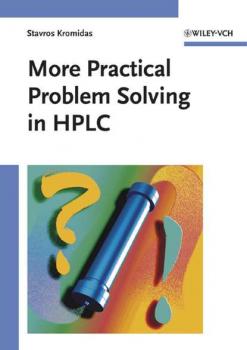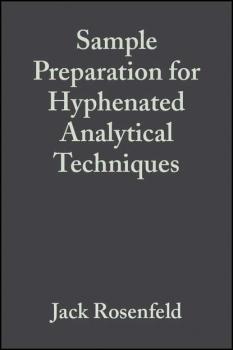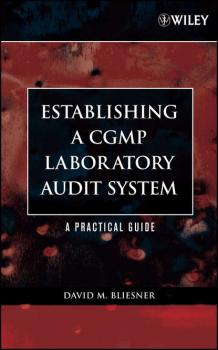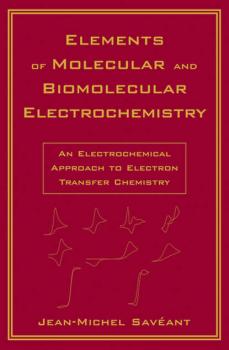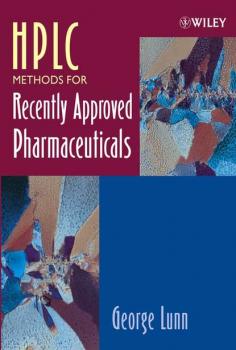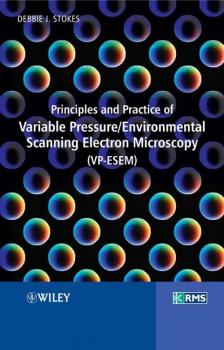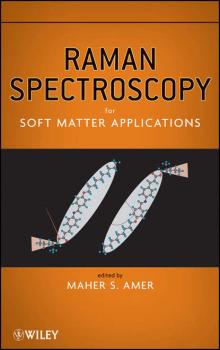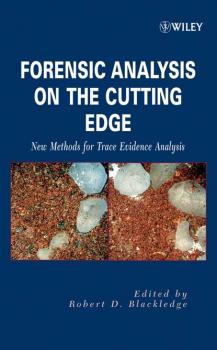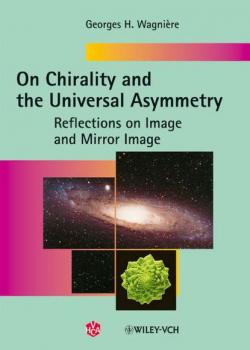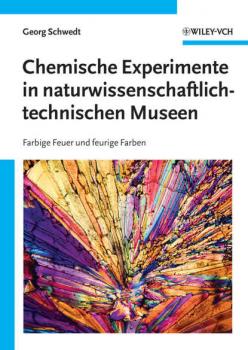Группа авторов
Список книг автора Группа авторовMore Practical Problem Solving in HPLC
A unique approach to solving HPLC problems. Everyone who bought «Problem Solving in HPLC» by Stavros Kromidas will equally benefit from nearly 100 new practical examples for optimization, trouble-shooting, and instrument performance given in this sequel. The author provides – guidance for selecting and evaluating methods, intstruments and columns, – practical help with everyday trouble-shooting, – advice for optimizing separations, always explaining the reason why. In each case the problem, the solution and the conclusions are presented over a maximum of 4 pages, and in addition the book contains manufacturers' addresses, references, data tables and checklists.
Sample Preparation for Hyphenated Analytical Techniques
Linking “standard” but often mutually incompatible analytical techniques – so called hyphenation – generally leads to enhanced analytical performance, so hyphenated techniques are widely used in areas where samples are presented in complex matrices, eg environmental, pharmaceutical and biochemical analysis. With these hyphenated techniques, sample preparation is often the most time-consuming step in analysis, particularly where compounds are present in low concentration, and it has a huge influence on the quality of the analytical results. Sample preparation is still not given the importance it deserves, however. The purpose of this book is to demonstrate the sample preparation chemistry that has enabled the present sensitivity, specificity and high throughput available across a range of hyphenated analytical techniques, and to illustrate the successful utilization of existing sample preparation methodologies in various analytical applications. It identifies the problems in biology, environmental science and pharmaceutical chemistry that require new ideas in chemistry and provides considered opinion on those newer techniques that may address these problems. By dealing with wider issues than is generally found in review papers, this book will provide analytical chemists with insights that are not available by searching the literature for papers on a specific topic.
Establishing A CGMP Laboratory Audit System
The first systematic, hands-on auditing guide for today's pharmaceutical laboratories In today's litigious environment, pharmaceutical laboratories are subject to ever stricter operational guidelines as mandated by the FDA, and must be able to establish and demonstrate sustainable operational practices that ensure compliance with the current good manufacturing practice (CGMP) regulations. David Bliesner's Establishing a CGMP Laboratory Audit System: A Practical Guide is designed to provide laboratory supervisors and personnel with a step-by-step, hands-on audit system that they can rely on to ensure their facility remains compliant with all current and future requirements. Focusing on a «team approach,» the author uses detailed flowcharts, checklists, and descriptions of the auditing process to help readers develop a new audit system or upgrade their current system in order to: * Improve current compliance * Demonstrate sustainable compliance * Produce data for federal inspections * Avoid regulatory action Enhanced with detailed checklists and a wealth of practical and flexible auditing tools on CD-ROM, this book provides an ideal resource for new and future laboratory personnel, and an excellent means for keeping existing industry practitioners up to date on the nuances of operating a consistently compliant pharmaceutical laboratory.
Elements of Molecular and Biomolecular Electrochemistry
This book is based on the George Fisher Baker Lecture given by Jean-Michel Savéant at Cornell University in Fall 2002. * The first book focusing on molecular electrochemistry * Relates to other fields, including photochemistry and biochemistry * Outlines clearly the connection between concepts, experimental illustrations, proofs and supporting methods * Appendixes to provide rigorous demonstrations to prevent an overload of algebra in the main text * Applications-oriented, focused on analyzing the results obtained rather than the methodology
HPLC Methods for Recently Approved Pharmaceuticals
An indispensable resource for busy researchers Your time is valuable-too valuable to spend hunting through the technical literature in search of the right HPLC assay techniques for your projects. With HPLC Methods for Recently Approved Pharmaceuticals, you'll quickly identify and replicate the ideal procedures for your project needs, without having to refer to original source publications. More of your time can then be spent in the lab, not the library. Covering the relevant world literature through 2003, this book picks up where Dr. Lunn's acclaimed HPLC Methods for Pharmaceutical Analysis left off. It arms you with established HPLC assay techniques for hundreds of newly approved drugs, as well as drugs for which assay methods were only recently developed. Combining detailed descriptions of procedures with specially annotated references, this practical handbook gives you: * HPLC methods for 390 commonly prescribed pharmaceutical compounds * Various procedures for each drug listed together-making it easy to mix and match for customized approaches * Methods for drugs in biological fluids and for bulk and formulated drugs * Chemical structures, molecular weights and formulas, and CAS Registry Numbers * Cross-references to The Merck Index * Retention times of other drugs that can be assayed using the same methods
Principles and Practice of Variable Pressure
Offers a simple starting point to VPSEM, especially for new users, technicians and students containing clear, concise explanations Crucially, the principles and applications outlined in this book are completely generic: i.e. applicable to all types of VPSEM, irrespective of manufacturer. Information presented will enable reader to turn principles into practice Published in association with the Royal Microscopical Society (RMS) -www.rms.org.uk
Raman Spectroscopy for Soft Matter Applications
Raman spectroscopy provides a critical characterization tool in analytical chemistry. This book presents the fundamentals of raman spectroscopy outside the focus of physics to offer an accessible guide to scientists working in the broad area of soft materials. The book is organized into four sections with the first devoted to an introduction to Raman spectroscopy which includes scattering theory and instrumentation. The following sections are devoted to application areas including polymers and colloids, food science, drug delivery, defense, and medical.
Forensic Analysis on the Cutting Edge
This title brings forensic scientists and chemists up-to-date on the latest instrumental methods for analysing trace evidence, including mass spectrometry, image analysis, DIOS-MS, ELISA characterization, statistical validation, and others. Illustrates comparative analysis of trace evidence by both old and new methods. Explains why some newer methods are superior to older, established methods. Includes chapters on analysis of DNA, ink, dyes, glitter, gun powder traces, condom trace evidence, footwear impressions, toolmark impressions, surveillance videos, glass particles, and dirt. Discusses applications such as mass spectrometry, image analysis, desorption-ionization on silicon mass spectrometry (DIOS-MS), ELISA characterization, and statistical validation.
On Chirality and the Universal Asymmetry
Until half a century ago, it was assumed that the forces of nature were symmetric and that they did not distinguish between right and left, between image and mirror image. The discovery of the violation of parity in 1956 was more than a sensation, for some it was a shock. It implied that the universe displays handedness, or chirality, and that it is fundamentally asymmetric. Remarkably, a most striking asymmetry is encountered in the realm of biology. Living organisms contain proteins built almost exclusively from L-amino acids, and nucleic acids derived from D-sugars only. Yet a mirror-image biochemistry, based on D-amino acids and L-sugars is, from a purely chemical standpoint, entirely conceivable. Where, then, does this extraordinary natural selectivity come from? Is it directly, or indirectly, connected to the universal violation of parity? This book is meant as a brief review of the various manifestations of handedness, or chirality, in the universe. It does not attempt to present a solution to basic questions which perhaps will never be unambiguously and conclusively answered. Rather, it is an excursion through nature, to observe and recognize how the chirality manifests itself at different structural levels. The excursion starts in the chemistry and physics laboratory. Then a journey into outer space and back in time is undertaken. After a return to our planet Earth, the focus is on the development of living organisms. The text should be accessible to anyone having the equivalent of a first-year university instruction in physics and chemistry. It is also hoped that a layperson with a more modest scientific formation may gain a general impression of the basic asymmetry in nature and of the fundamental significance of chirality. Mathematical expressions, wherever they occur, may then be overlooked. Some more difficult sections may be skipped. A Glossary preceding the Subject Index should be helpful.
Chemische Experimente in naturwissenschaftlich-technischen Museen
Georg Schwedt ladt Sie ein, ihn auf seiner abwechslungsreichen Reise durch ausgewahlte naturwissenschaftlich-technische Museen quer durch Deutschland zu begleiten. Die Stationen seiner spannenden Reise sind: ? das Bergbaumuseum Weltkulturerbe Rammelsberg Goslar, ? das Deutsche Erdolmuseum Wietze, ? das Deutsche Salzmuseum Luneburg, ? das Deutsche Apothekenmuseum Heidelberg, ? das Landesmuseum fur Technik und Arbeit Mannheim, ? das Museum fur Brotkultur Ulm und ? das Fuhlrott-Museum & Forschungsinstitut in Wuppertal. In bewahrter Manier kombiniert Georg Schwedt spannende Chemieexperimente mit interessanten Hintergrundinformationen zu den Museen und ihren vielfaltigen Themenschwerpunkten. Lassen Sie sich einfangen von der Faszination, wie man mit einfachen Hilfsmitteln Chemieexperimente – ob im Museum, in der Schule oder zu Hause – nachvollziehen kann. Wie kann beispielweise aus dem Grundstoff Erdol ein Arzneimittel hergestellt werden? Wie entsteht lockeres Brot aus den Grundzutaten Mehl, Backtriebmittel und Wasser? Und vielleicht konnen die Experimente Sie so fesseln, dass Sie als nachste Urlaubsreise eine Museumstour planen, um die vorgestellten Museen einmal in Natura kennen zu lernen. Oder Sie nutzen den nachsten anstehenden Schulausflug, um den falschlich als langweilig verponten Museumsbesuch bei Jugendlichen und Schulern zu einem attraktivem Erlebnis zu machen. Dieses Buch ist fur alle Kenner der anderen «Schwedt Experimentierbucher», fur naturwissenschaftlich interessierte Kulturhistoriker, fur kulturhistorisch interessierte Naturwissenschaftler und naturlich fur alle, die einfach gerne ins Museum gehen und dort mehr wollen als nur Exponate ansehen.
